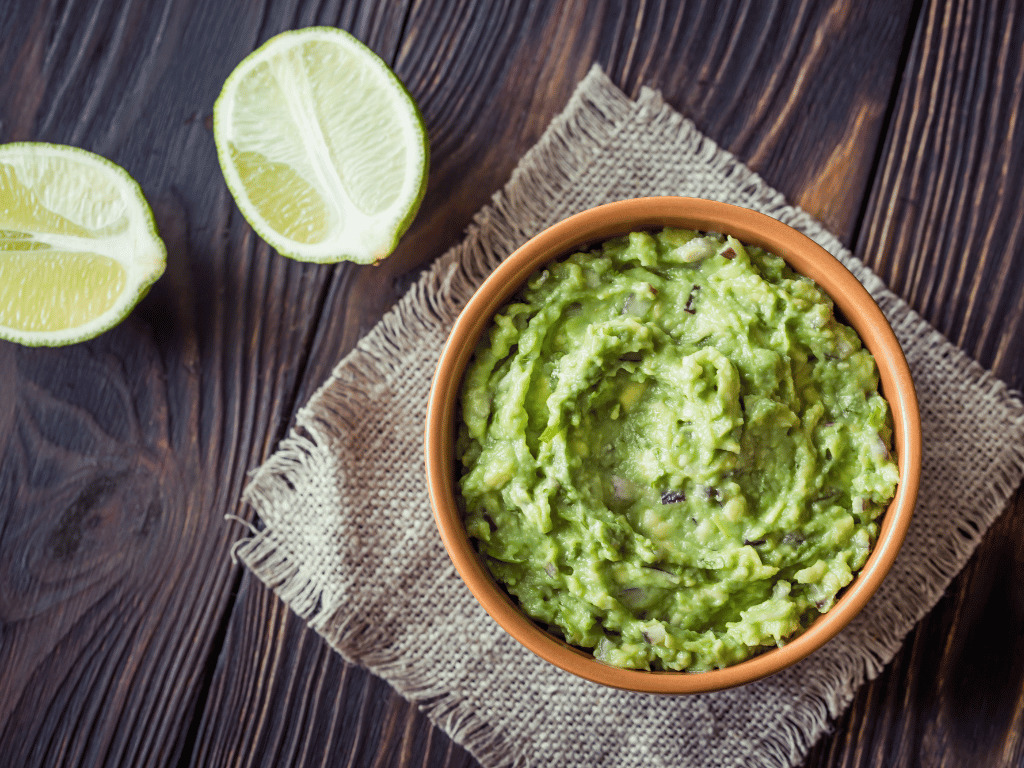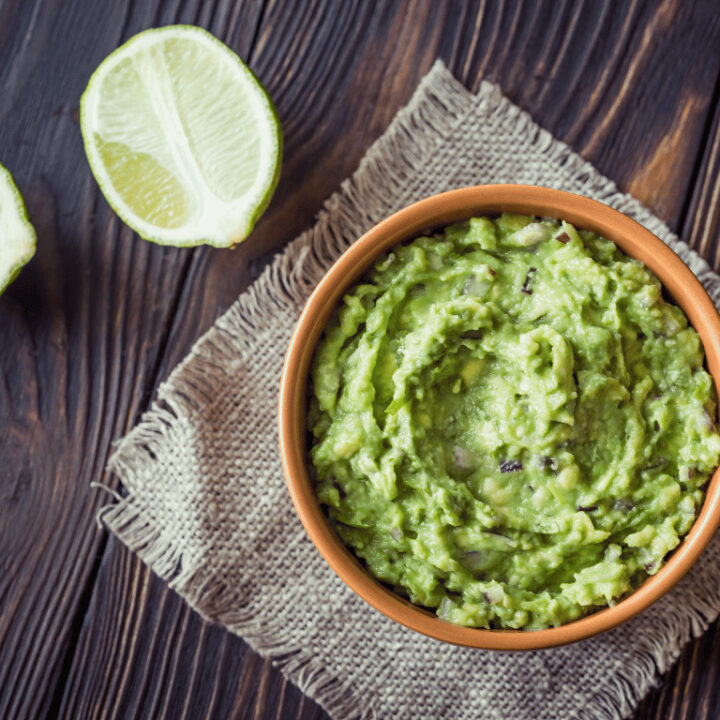Guacamole is not only delicious but also nutritious, thanks to its main ingredient: avocados. Avocado is a nutrient-dense fruit that offers a wide range of health benefits.

Guacamole, a creamy and flavorful dip made primarily from avocados, has a rich history that dates back to ancient Mesoamerican civilizations. Here’s a brief overview of the history of guacamole:
- Pre-Columbian Origins: Guacamole’s roots can be traced to the Aztecs, who inhabited what is now present-day Mexico. The word “guacamole” itself is derived from the Aztec Nahuatl word “ahuacamolli,” which roughly translates to “avocado sauce” or “avocado mixture.” The Aztecs and other indigenous Mesoamerican cultures cultivated and consumed avocados for thousands of years.
- Traditional Preparation: The original version of guacamole made by the Aztecs and other indigenous peoples typically consisted of mashed avocados mixed with various local ingredients. These ingredients often included tomatoes, chilies, onions, and sometimes herbs like cilantro. Traditional versions of guacamole did not include ingredients like lime or garlic, which were introduced later.

- Introduction of New Ingredients: After the Spanish conquest of the Aztec Empire in the early 16th century, European ingredients such as garlic, cilantro, and citrus fruits like lime and lemon were introduced to the region. These ingredients began to find their way into the traditional guacamole recipes.
- Popularity in Mexico: Guacamole continued to evolve and gain popularity in Mexico, becoming a staple in Mexican cuisine. It was often served as a condiment, dip, or accompaniment to dishes like tacos, tamales, and enchiladas.

- Modern Variations: Today, guacamole recipes vary widely, and people often personalize their versions with additional ingredients like sour cream, cheese, or spices. Guacamole is commonly served as a dip with tortilla chips, a topping for tacos and burritos, or alongside various Mexican and Tex-Mex dishes.
- Global Popularity: Guacamole has gone beyond its Mexican origins and has become a popular and recognized dish worldwide. Its reputation as a healthy and flavorful dip has contributed to its widespread appeal.

Avocado is a nutrient-dense fruit that offers a wide range of health benefits. Here are some of the key benefits of avocado:
- Nutrient-Rich: Avocado is packed with essential nutrients, including:
- Healthy monounsaturated fats, which are heart-healthy.
- Fiber, which supports digestion and helps control blood sugar levels.
- Vitamins such as vitamin K, vitamin E, vitamin C, and various B vitamins.
- Minerals like potassium, which is crucial for heart health and maintaining proper blood pressure.
- Heart Health: Avocado’s high monounsaturated fat content can help reduce bad cholesterol levels, lowering the risk of heart disease. Additionally, the potassium content helps regulate blood pressure.

- Weight Management: Despite their calorie content, avocados can support weight management because they are rich in fiber and healthy fats. These help increase satiety, reduce overeating, and support weight loss when consumed in moderation.
- Digestive Health: The fiber in avocados promotes regular bowel movements, aids in digestion, and may help prevent constipation.
- Eye Health: Avocado contains lutein and zeaxanthin, two antioxidants that are beneficial for eye health. These nutrients can help protect against age-related macular degeneration and cataracts.

- Skin Health: The vitamins and healthy fats in avocados can contribute to healthy, glowing skin. Avocado oil is also used in various skincare products for its moisturizing properties.
- Anti-Inflammatory: Avocados contain various antioxidants and anti-inflammatory compounds that may help reduce inflammation throughout the body. Chronic inflammation is linked to several health issues.
- Blood Sugar Control: The fiber and healthy fats in avocados can help stabilize blood sugar levels, making them a suitable food choice for individuals with diabetes.
- Bone Health: Avocado contains vitamin K, which is essential for bone health as it helps with calcium absorption and bone mineralization.

- Improved Nutrient Absorption: The healthy fats in avocados can enhance the absorption of fat-soluble vitamins (A, D, E, and K) and other fat-soluble nutrients from other foods you eat.
- Reduced Risk of Metabolic Syndrome: Some studies suggest that avocado consumption may help reduce the risk of metabolic syndrome, a cluster of conditions that increase the risk of heart disease, stroke, and type 2 diabetes.
- Versatility: Avocado is a versatile ingredient that can be incorporated into various dishes, such as salads, sandwiches, smoothies, and guacamole.

Easy to make Guacamole
Guacamole is not only delicious but also nutritious, thanks to its main ingredient: avocados. Avocado is a nutrient-dense fruit that offers a wide range of health benefits.
Ingredients
- 3 ripe avocados
- 1 small red onion, finely diced
- 1-2 cloves of garlic, minced
- 2 small tomatoes, diced
- 1-2 jalapeño peppers, finely chopped (adjust to your preferred level of spiciness)
- Juice of 1-2 limes (adjust to taste)
- 1/4 cup fresh cilantro leaves, chopped
- Salt and pepper to taste
Instructions
- Cut the avocados in half, remove the pits, and scoop the flesh into a mixing bowl.
- Use a fork or potato masher to mash the avocados to your desired level of chunkiness.
- Add the finely diced red onion, minced garlic, diced tomatoes, and chopped jalapeño peppers to the mashed avocados.
- Squeeze the juice of 1-2 limes over the mixture. Lime juice not only adds flavor but also helps prevent the avocados from browning.
- Sprinkle the chopped cilantro leaves over the mixture.
- Season the guacamole with salt and pepper to taste. Start with a pinch of salt and pepper and adjust as needed.
- Gently mix all the ingredients together until everything is well combined.
- Transfer the guacamole to a serving bowl. You can garnish it with a few extra cilantro leaves or a slice of lime if desired.
In recent years, guacamole has become a symbol of Mexican cuisine and is celebrated during events like Cinco de Mayo and Mexican Independence Day. It continues to be a versatile and beloved dish enjoyed by people of all backgrounds and culinary preferences.
You may also like:


